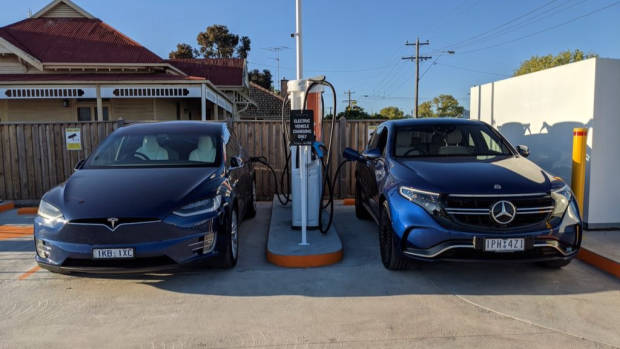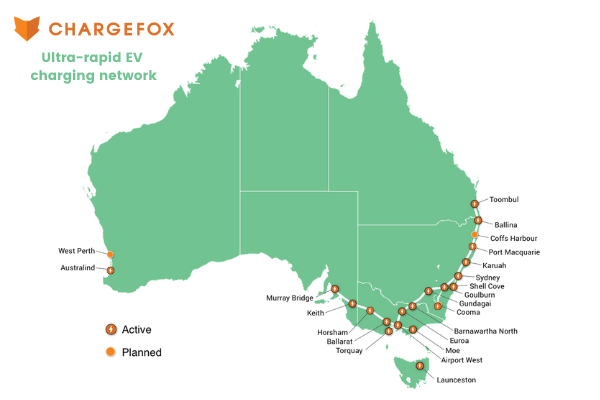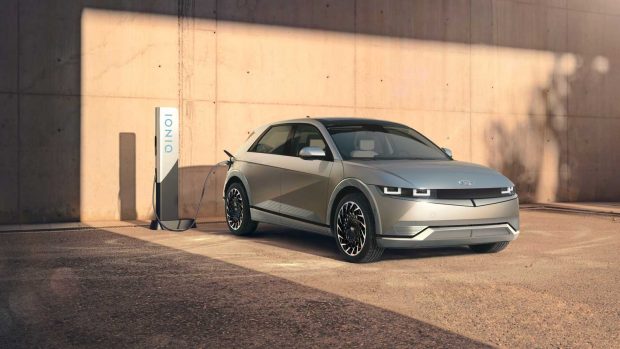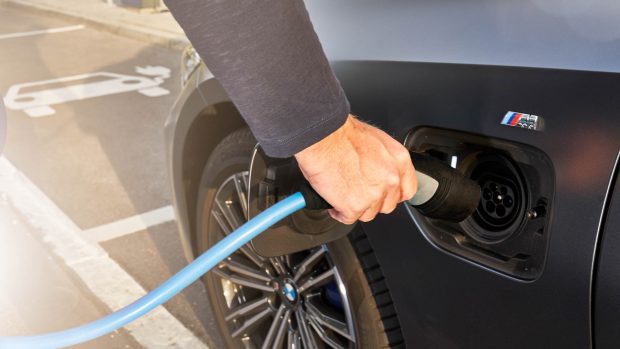-
Car Reviews
- All reviews
- Midsize SUVs
- Small cars
- Utes
- Small SUVs
- Large SUVs
- Large cars
- Sports SUVs
- Sports cars
- Vans
Latest reviews
- Car News
-
Car Comparisons
Latest comparisons
- Chasing Deals
Australia’s largest EV charging network will soon ramp up its efforts to widen its network in an attempt to ease range anxiety across the country.
Chargefox will ramp up construction of its expanding EV charging network under a strategy switch that would see them move away from ultra-rapid chargers in favour of building a wider network.
The Australian company, which was founded in 2017, has become a leader in the EV charging space, which was cemented further when it completed its Ultra-Rapid Network project earlier this year.
The project linked 22 of its 350kW chargers from Brisbane to Adelaide via Sydney and Melbourne – with additional stations built in Perth and Tasmania, and in doing so made interstate travel far more realistic for EV owners.
Evan Beaver, the head of charging at Chargefox, told Chasing Cars the fast chargers had formed a “backbone” for the EV network – but it won’t be the direction they take going forward.
“Going from 175kW to 350kW makes the cost of a site a lot more expensive, almost three times the price in some places, we can build heaps more sites if we make them just a little bit less powerful,” he said.
Mr Beaver pointed out very few vehicles in Australia, such as the Porsche Taycan and Tesla Model 3 are currently capable of charging at over 150kW, so the impact would be minimal.
“The marginal loss is that those drivers will probably have to spend three or four extra minutes at that site, as a result of us building three more sites,” he said.
Other vehicles able to hit this benchmark in Australia include the Tesla Model S sedan and Model X large SUV with a maximum charging speed of 200kW.
The incoming Hyundai Ioniq 5 midsize SUV is about to set a new benchmark in Australia as the first EV to charge at 350kW – allowing it to top up its 64kWh battery from 10-80 per cent in just 18 minutes.
Comparing the pair back to back, a 350kW charger would add around 100km of range in five minutes, while a 150kW charger would add roughly 43km in the same time – though it should be noted that charging times are slower at the beginning and end of the cycle.
It should be noted that a significant amount of fast-charging EVs are on the horizon, with the Kia EV6 confirmed for Australia, with the Mercedes-Benz EQS and BMW iX also due this year, with all sporting charging speeds up to or in excess of 150kW.
Mr Beaver, who previously played a major role in establishing Tesla’s Supercharger Network in Australia, said going forward the focus would be on expanding their network as much as possible.
“One of the key things that reduces people’s anxiety about EVs is dots on the map and so you multiply that out and it means you’ve got to build the leanest sites possible,” he said.
While the declining costs of chargers is helping their money go further, there will also be some sacrifices such as going without any shade infrastructure to help keep costs down.
Mr Beaver said he held high hopes expanding their EV network with state governments in South Australia, Queensland and Victoria all throwing money behind building more chargers – with the NSW government expected to announce similar plans soon.
“I think that, like renewables, charging infrastructure in Australia is going to ramp up really fast in the next three years,” he said.
While EV takeup is currently recorded at less than one per cent of of sales in Australia, a rapidly expanding charging network combined with an influx of increasingly capable electric cars could see the pendulum begin to swing the other way.
Latest news
About Chasing cars
Chasing Cars reviews are 100% independent.
Because we are powered by Budget Direct Insurance, we don’t receive advertising or sales revenue from car manufacturers.
We’re truly independent – giving you Australia’s best car reviews.




